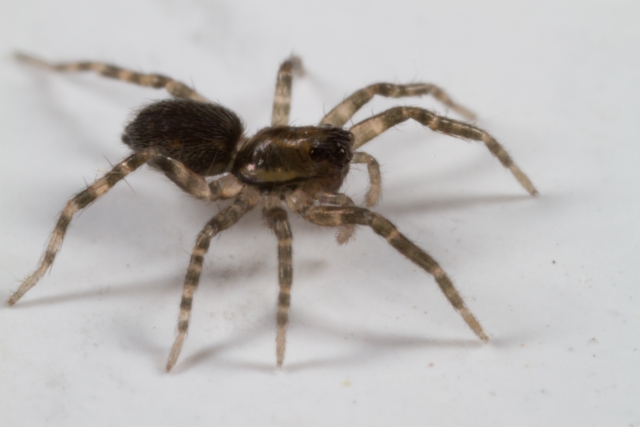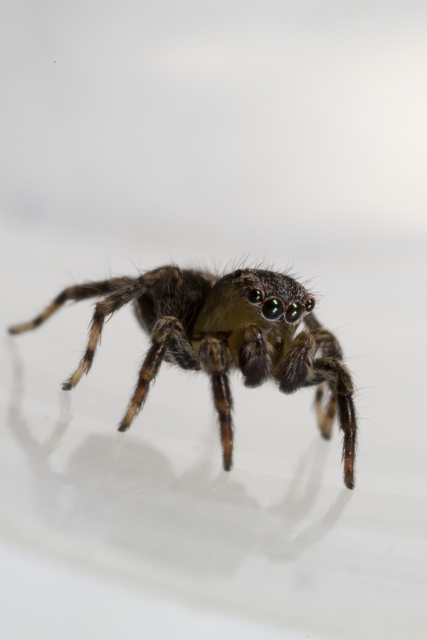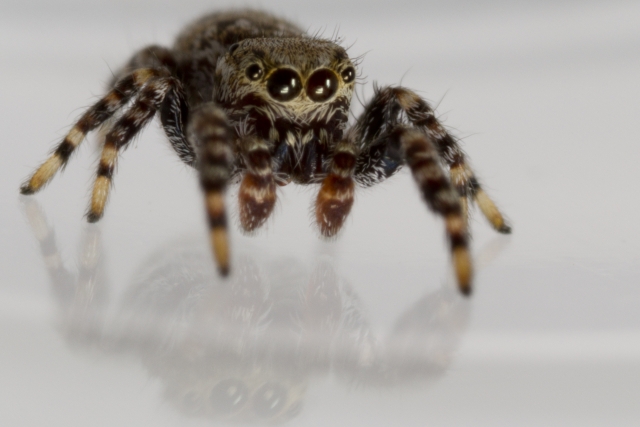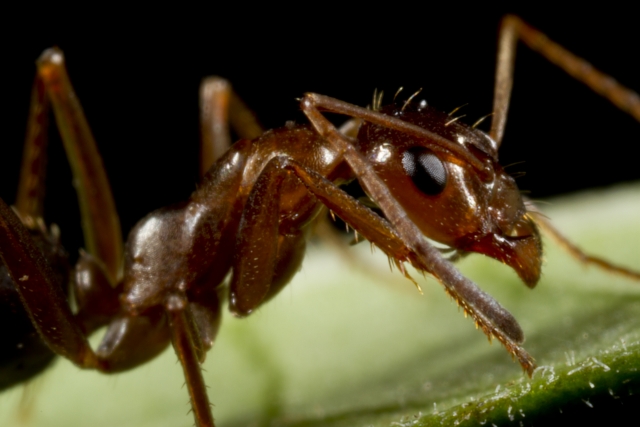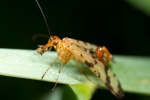supermacro
When a Spider Wants Yogurt
ktuli — Tue, 03/12/2013 - 16:26
Ok, I know this shot has some blown highlights, but I just think it looks funny if you think about a spider opening a cup of yogurt... :)
Technical DataCanon EOS 7D, Canon MP-E 65mm f/2.8 1-5x Macro, 1/250 sec at f/11. Canon Macro Twin Lite MT-24EX in ETTL mode. ISO 100. RAW processing in Adobe Camera Raw.
Tomorrow we'll look at some birds, so those of you not liking the spiders should stop back then...
- Bill
Spider Season is Upon Us!
ktuli — Tue, 03/12/2013 - 08:02
Yay! It will soon be spring, and that means spiders!!!
Technical Data: Canon EOS 7D, Canon MP-E 65mm f/2.8 1-5x Macro, 1/250 sec at f/8. Canon Macro Twin Lite MT-24EX in ETTL mode. ISO 100. RAW processing and cropped (mouseover for original) in Adobe Camera Raw.
More to come soon!
- Bill
First Spiders of 2013
ktuli — Wed, 02/13/2013 - 12:55
Ok - nothing spectacular here, but I managed to find two spiders yesterday and bring them home for a quick photoshoot (the second one I actually carried in my hand because I didn't have containers). I have just been thinking that I haven't been using the camera much recently, so I am excited to start finding spiders again!
Technical Data: Canon EOS 7D, Canon MP-E 65mm f/2.8 1-5x Macro, 1/250 sec at f/8. Canon Macro Twin Lite MT-24EX in ETTL mode. ISO 100. RAW processing in Adobe Camera Raw.
Technical Data: Canon EOS 7D, Canon MP-E 65mm f/2.8 1-5x Macro, 1/250 sec at f/16. Canon Macro Twin Lite MT-24EX in ETTL mode. ISO 100. RAW processing in Adobe Camera Raw.
That second guy is at 5x magnification, so he was pretty darn tiny.
- Bill
More Jumping Spider Reflections
ktuli — Fri, 12/28/2012 - 12:34
Ok - been a while since we've had any spider photos...
Technical Data: Canon EOS 7D, Canon MP-E 65mm f/2.8 1-5x Macro, 1/250 sec at f/16. Canon Macro Twin Lite MT-24EX in ETTL mode. ISO 100. RAW processing in Adobe Camera Raw.
I can't wait till jumping spiders are around again.
- Bill
Focus Stack: Praying Mantis
ktuli — Mon, 12/17/2012 - 20:20
Yesterday, while walking our dogs, I spotted a dead praying mantis laying in some bushes. Since a live mantis would never sit still for a focus stack process, I decided this was a perfect opportunity to try one, so I picked it up in a plastic bag and carried it home to photograph.
A focus stack is a process of taking multiple photos, each with a slightly different slice of the scene in focus. Once you have all of your slices, you can run it through some software (in my case, I used Zerene Stacker) to align and stack the slices into a super-image with all of the scene in focus. This process is very popular for macro photographers where the depth of field can be very small (even with a small aperture).
This is the first time I've ever tried this, so I don't know if I did things right or not - I pretty much just accepted the defaults and let the software do its thing. Zerene provides two different stacking algorithms - one called DMap and another called PMax - so I tried both to see what results I could get. Here I also provide a single slice for the set to show just how little in focus I was getting for each slice.
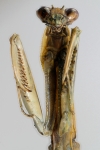 DMap |
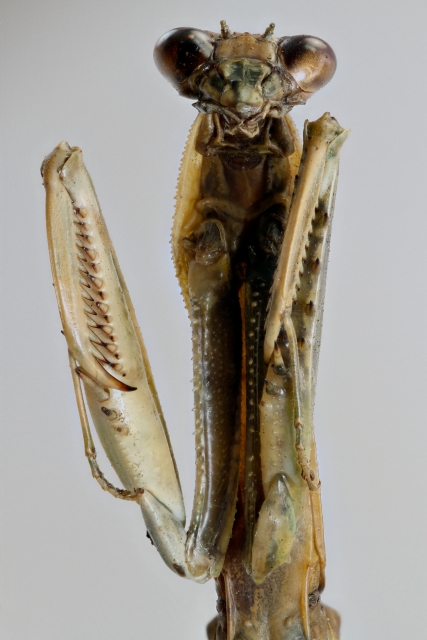 |
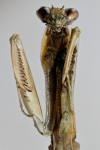 PMax |
|
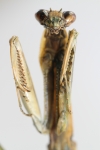 Single Slice |
Technical Data: Canon EOS 7D, Canon EF 100mm f/2.8L Macro IS USM, 1/250 sec at f/5.6. Canon Speedlight 580EX II flash in eTTL mode and wireless control. Image Stabilization off. ISO 640. 22 image stack processed in Zerene Stacker.
As you can see this shot above was done with my 100mm macro lens, but was shot at about 1:1.5 magnification, meaning it is not at lifesize magnification. I had to do this to get the head and forearms in the shot at once. Unfortunately, it wasn't very flexible, so I didn't have much choice on the posing or I would have moved the arm on the right a bit to separate it from the body; however, I was afraid of breaking the arm off, so I didn't try to move it.
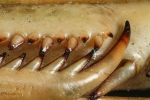 DMap |
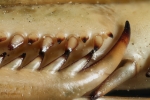 PMax |
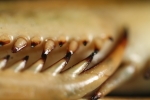 Single Slice |
 |
||
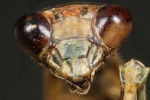 DMap |
 PMax |
 Single Slice |
Technical Data: Canon EOS 7D, Canon MP-E 65mm f/2.8 1-5x Macro, 1/250 sec at f/5.6. Canon Macro Twin Lite MT-24EX in ETTL mode. ISO 100. 17 and 18 image (respectively) stack processed in Zerene Stacker.
As you can see, the DMap method seems to leave some really undesirable artifacts in the final image that look ugly. I'm not sure if that was my fault for not configuring something correctly (or from my old computer not keeping up), or if that method doesn't work well for this kind of shot, or what. I'll have to do more research and see whether I can figure out why that happened.
With the second and third shots, I used the Canon MP-E 65mm macro lens. For the claw, I used a 4x magnification (4:1), and a 2x magnification (2:1) for the face. With the face, I apparently should have taken more shots to get the "neck/shoulders" in focus as well at the bottom of the frame - that was my mistake because I was looking at the top of the mantis' head as I moved the focus forward to get the slices and forgot to look at the rest of the frame.
To take these shots, I had my camera mounted on my macro focusing rail and set the lens in manual focus mode and simply moved the whole rig forward and backwards to get the slices I needed. To be honest, it was a lot of work to setup the shot and make the very small adjustments to get all the necessary slices.
- Bill
Reflecting on my Spider Photos
ktuli — Wed, 10/03/2012 - 14:29
I know I've been a bit lax in posting recently. I have been trying to get the gallery system upgraded to the latest version and that has been proving less than simple. On top of that, I've had a backlog of photos to process - today's is one of them.
I recently noticed that at the right angle, the containers I use to catch these jumping spiders in produce a nice soft reflection of the spider. There are some distracting elements (note the while line through the reflection). This shot is a fairly aggressive crop to highlight the spider and reflection while eliminating those distracting elements as much as possible...
Technical Data: Canon EOS 7D, Canon MP-E 65mm f/2.8 1-5x Macro, 1/250 sec at f/13. Canon Macro Twin Lite MT-24EX in ETTL mode. ISO 100. RAW processing and cropped in Adobe Camera Raw.
- Bill
Trashline Spider
ktuli — Wed, 09/26/2012 - 18:27
As the weather gets colder, it will be harder and harder to find spiders... but you know I'll keep looking. We've had one of these interesting spiders living on our shed all summer, so when I saw this one with the nice background, I figured I needed to get a shot of it.
These spiders are called trashline for obvious reasons, and it is used as a form of camouflage - to great effect.
Technical Data: Canon EOS 7D, Canon MP-E 65mm f/2.8 1-5x Macro, 1/25 sec at f/14. Canon Macro Twin Lite MT-24EX in ETTL mode. ISO 1250. RAW processing in Adobe Camera Raw.
The species is Cyclosa conica which is in reference to its cone shaped abdomen, and it is one of the things that actually helps one to spot this spider on its web. As it hides among its 'trash' (which is the remains of its previous meals), it blends in almost perfectly.
Such a cool spider...
- Bill
Super Macro Ant
ktuli — Mon, 09/17/2012 - 20:33
Ok - a brief break from the Yosemite photos (mainly because I need to process more of them) to share a super macro shot I did of an ant during this past week's MeetUp Macro Shootout that I hosted out at South Park...
Technical Data: Canon EOS 7D, Canon MP-E 65mm f/2.8 1-5x Macro, 1/160 sec at f/16. Canon Macro Twin Lite MT-24EX in ETTL mode. ISO 100. RAW processing in Adobe Camera Raw.
Not necessarily a view you get of an ant every day. I normally can't get shots like this because ants rarely hold still, but it was fairly early and somewhat chilly that morning, so this ant was quite sluggish which allowed me to get several shots of it.
- Bill
Jumping Spider Super Assortment
ktuli — Thu, 08/09/2012 - 20:45
Too many posts without a spider... so here's a whole assortment to get us caught up... enjoy!
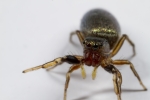 |
 |
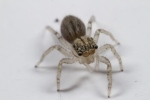 |
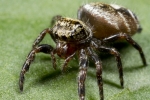 |
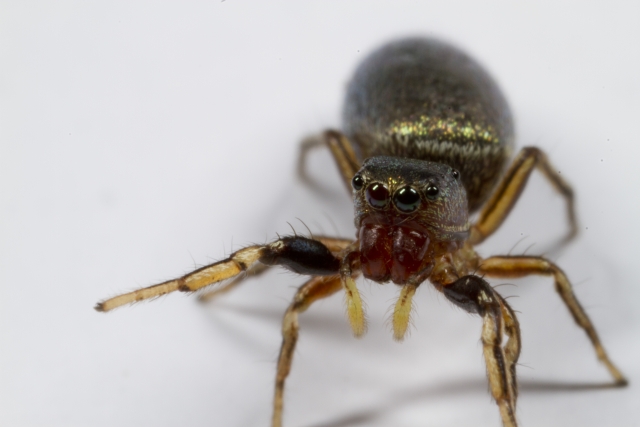 |
|||
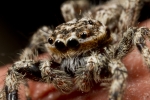 |
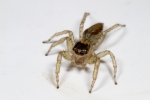 |
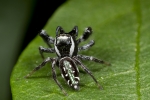 |
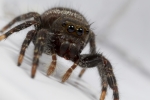 |
There. Now I feel better.
- Bill
Ant-mimic Jumping Spider
ktuli — Tue, 07/31/2012 - 20:07
Ok - normally I would leave a poll up for a little bit longer as the top post, but I just couldn't wait to post this...
Yesterday, on my walk home from work, I found what I believe is an ant-mimic jumping spider Sarinda hentzi). I've been searching for one of these for years - I can't begin to count the number of actual ants that I've given a second glance to to try and find one. As you'll see, it is a wonder I even found this one.
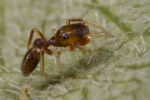 |
 |
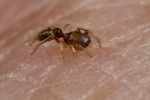 |
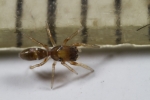 |
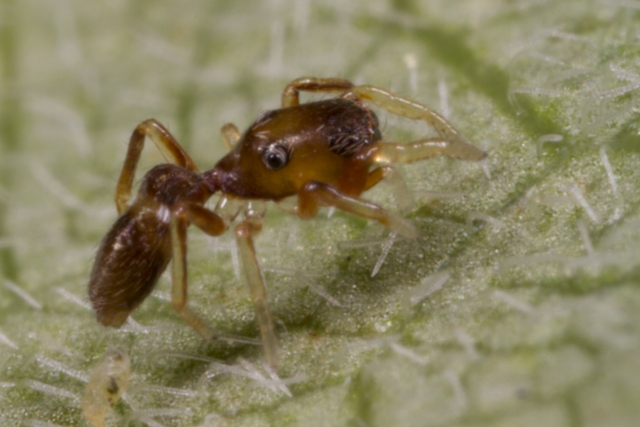 |
|||
 |
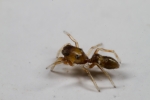 |
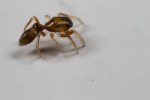 |
 |
Technical Data: Canon EOS 7D, Canon MP-E 65mm f/2.8 1-5x Macro, 1/250 sec at f/16. Canon Macro Twin Lite MT-24EX in ETTL mode. ISO 100. RAW processing and cropped (top left, bottom left) in Adobe Camera Raw.
As you can see from the image in the top right, this little girl (I think it is a female, but I'm not 100% certain) is only 2mm in size. Yes, that is a ruler showing the mm scale that it is climbing on. Adults can grow to between 5-7mm, so this is obviously a juvenile - you can also tell this by the semi-transparent nature of its legs (remember the other spiderlings?). All of these shots were taken at 5x magnification, and the two on the left were cropped even more.
I'm not sure why these little spiders do this mimicry to look like ants, but they do a very good job of it. As you can see in the image on the top left, it will often hold its front two legs up to its head much the way an ant's antenna look. I don't know if this helps them to catch more prey or to be more likely to be ignored by other insects and spiders (ants can usually put up a very good fight and rarely travel alone, so picking on an ant isn't always wise).
Regardless of why, I find this little spider incredibly fascinating, and I am so glad to have been able to finally see one first hand. However, I'm sure this means I will spend many more seconds of my life looking at ants a second time to count how many legs are there... :)
- Bill




